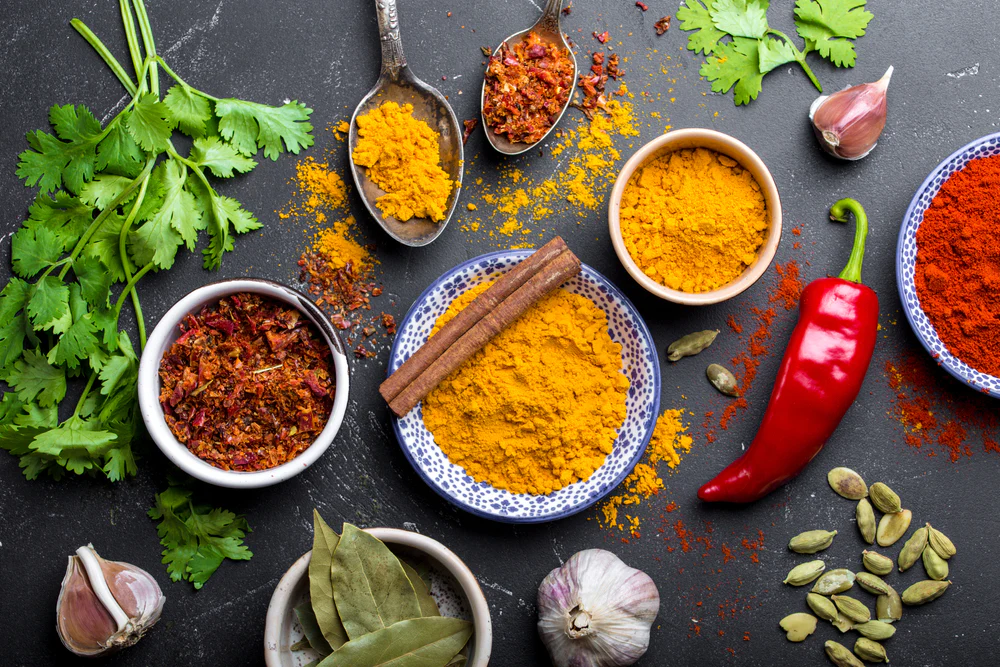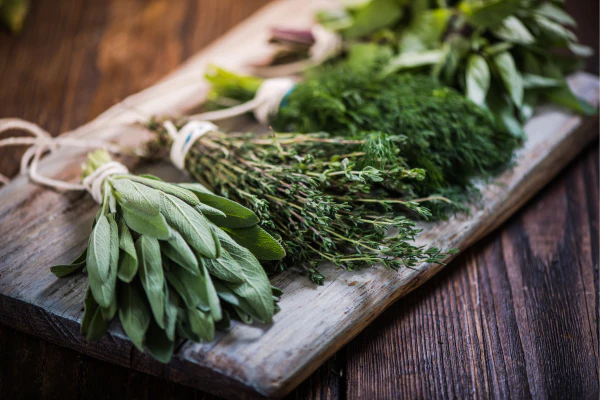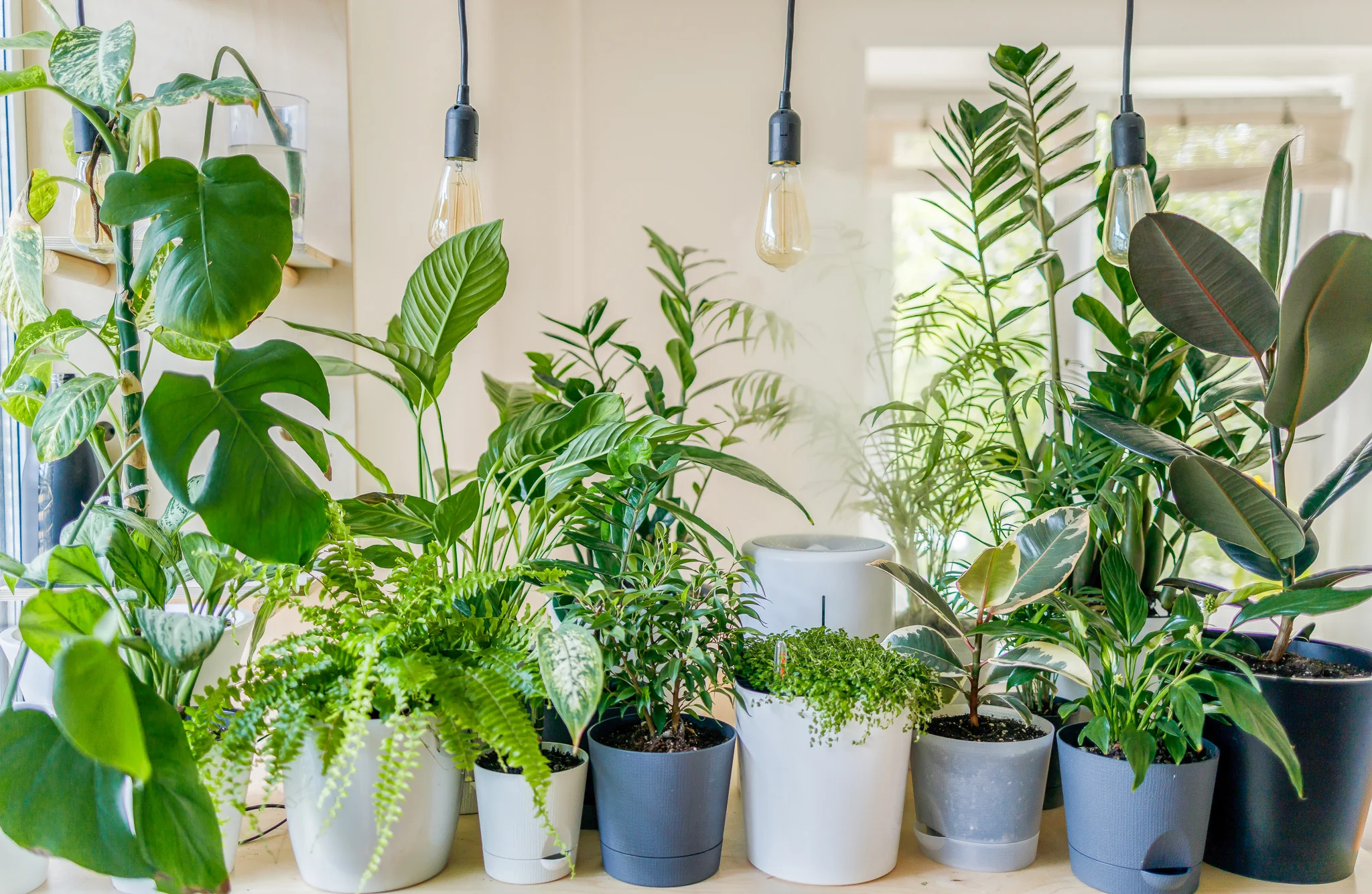Discover how to grow curry leaves, tulsi, and other Indian herbs in pots – perfect for apartments and small spaces
Growing your own Indian kitchen herbs is a great way to eat healthier, save money, and connect with nature. Even if you don’t have a big garden, you can grow herbs like curry leaves (kadi patta), tulsi (holy basil), mint (pudina), coriander (dhaniya), ajwain (carom), and even lemongrass in pots on your balcony or windowsill.
This guide is perfect for beginners, especially those living in Indian cities, where space is limited. We’ll show you how to grow these herbs step-by-step using basic tools, soil, and kitchen scraps. You’ll also find natural fertilizer tips, seasonal planting advice, and answers to the most common questions.
Why Grow Indian Herbs at Home?

- Fresh, organic herbs at your fingertips
- No harmful chemicals or pesticides
- Supports a sustainable lifestyle
- Saves trips to the market
- Easy Ayurvedic remedies at home
- Beautifies your space and improves air quality
What You Need to Get Started
- 6–12 inch pots with drainage holes
- Organic potting mix (garden soil + compost + cocopeat)
- Healthy seeds or saplings
- A sunny balcony or window
- Watering can or bottle spray
- Optional: neem oil, natural fertilizers like cow dung or compost
Also Read 7 Easy Garden Hacks You’ll Wish You Knew Sooner
How to Grow Curry Leaves (Kadi Patta)
Curry leaves are essential in Indian cooking. They add a rich aroma to dals, sabzis, and tempering.
- Pot size: At least 12–14 inches deep
- Sunlight: Full sun (6–8 hours daily)
- Watering: Only when topsoil feels dry
- Soil: Loose, well-drained soil with compost and a bit of sand
- Care Tip: Start from a healthy sapling. Use vermicompost or cow dung monthly. Prune to encourage more leaves.
How to Grow Tulsi (Holy Basil)
Tulsi is both a medicinal and sacred herb in Indian homes. It’s great for immunity and daily rituals.
- Pot size: 8–10 inches
- Sunlight: Needs at least 5–6 hours of direct sunlight
- Watering: Water once a day in summer, less in winter
- Soil: Organic soil with compost
- Care Tip: Remove flowers to encourage new leaves. Avoid chemical fertilizers.
How to Grow Mint (Pudina)
Mint grows quickly and is perfect for chutneys, drinks, and cooling teas.
- Pot size: Wide, shallow pots (8–10 inches deep)
- Sunlight: Partial shade works fine
- Watering: Keep soil consistently moist
- Soil: Moist, well-aerated compost-rich mix
- Care Tip: Start with a cutting or roots. Trim regularly to avoid overgrowth.
How to Grow Coriander (Dhaniya)
Coriander is one of the easiest herbs to grow and is used in almost every Indian dish.
- Pot size: Wide trays (6–8 inches deep)
- Sunlight: 4–5 hours daily
- Watering: Water daily, but don’t over-soak
- Soil: Well-draining loamy soil
- Care Tip: Slightly crush seeds before sowing. Sow every 2–3 weeks for continuous harvest.
How to Grow Ajwain (Carom Leaves / Omavalli)
Ajwain leaves are known for their medicinal benefits, especially for digestion and colds.
- Pot size: 8–10 inches
- Sunlight: Needs 3–4 hours of sunlight
- Watering: Every alternate day
- Soil: Loose soil with compost
- Care Tip: Start from a cutting. Prune regularly. It also grows well indoors.
How to Grow Lemongrass
Lemongrass is used in herbal teas and as a natural insect repellent.
- Pot size: 10–12 inches deep
- Sunlight: Full sunlight preferred
- Watering: 2–3 times a week
- Soil: Sandy loam with compost
- Care Tip: Use cuttings from fresh stalks. Easy to grow once rooted.
Homemade Organic Fertilizers for Herbs
Skip chemicals. Try these natural fertilizers instead:
- Crushed eggshells
- Banana peel water
- Used tea leaves (washed)
- Buttermilk spray
- Vermicompost or cow dung
- Neem cake powder to repel pests
Best Seasons to Start Herb Gardening in India
| Herb | Ideal Growing Season |
|---|---|
| Curry Leaves | Feb–Jul (Spring to Monsoon) |
| Tulsi | Spring and Early Summer |
| Mint | Spring to Early Winter |
| Coriander | Oct–Feb (Cooler months) |
| Ajwain | All year (except harsh winter) |
| Lemongrass | Monsoon and Summer |
Maintenance and Pest Control Tips
- Use neem oil spray every 2–3 weeks to control pests
- Rotate pots weekly for even sunlight
- Don’t overwater – herbs dislike soggy roots
- Remove yellowing leaves to promote growth
- Add compost monthly for better nutrition
FAQs – Growing Indian Herbs at Home
Q. Can I grow herbs indoors in low sunlight?
Yes. Herbs like ajwain and mint do well with partial sunlight near windows.
Q. How long do these herbs take to grow?
Mint and coriander grow fast—within 2–3 weeks. Tulsi and curry leaves take longer but are easy to maintain.
Q. Do herbs attract pests?
Yes, sometimes. Use neem oil or garlic-chilli spray. Keep leaves dry and avoid overcrowding.
Q. Can I reuse old soil?
Yes, after rejuvenating it with compost and sun-drying for a week.
Q. What herbs are best for beginners?
Start with mint, coriander, and tulsi. They are easy and low maintenance.
Final Words: Bring Green Goodness into Your Home
Whether you live in a flat in Mumbai or a villa in Bangalore, you can grow your own herb garden at home. It takes very little space, time, or effort.
With just a few pots and some care, you’ll always have fresh curry leaves for your dal, tulsi for your chai, and mint for your chutney.
Start small. Grow often. Eat fresh.









